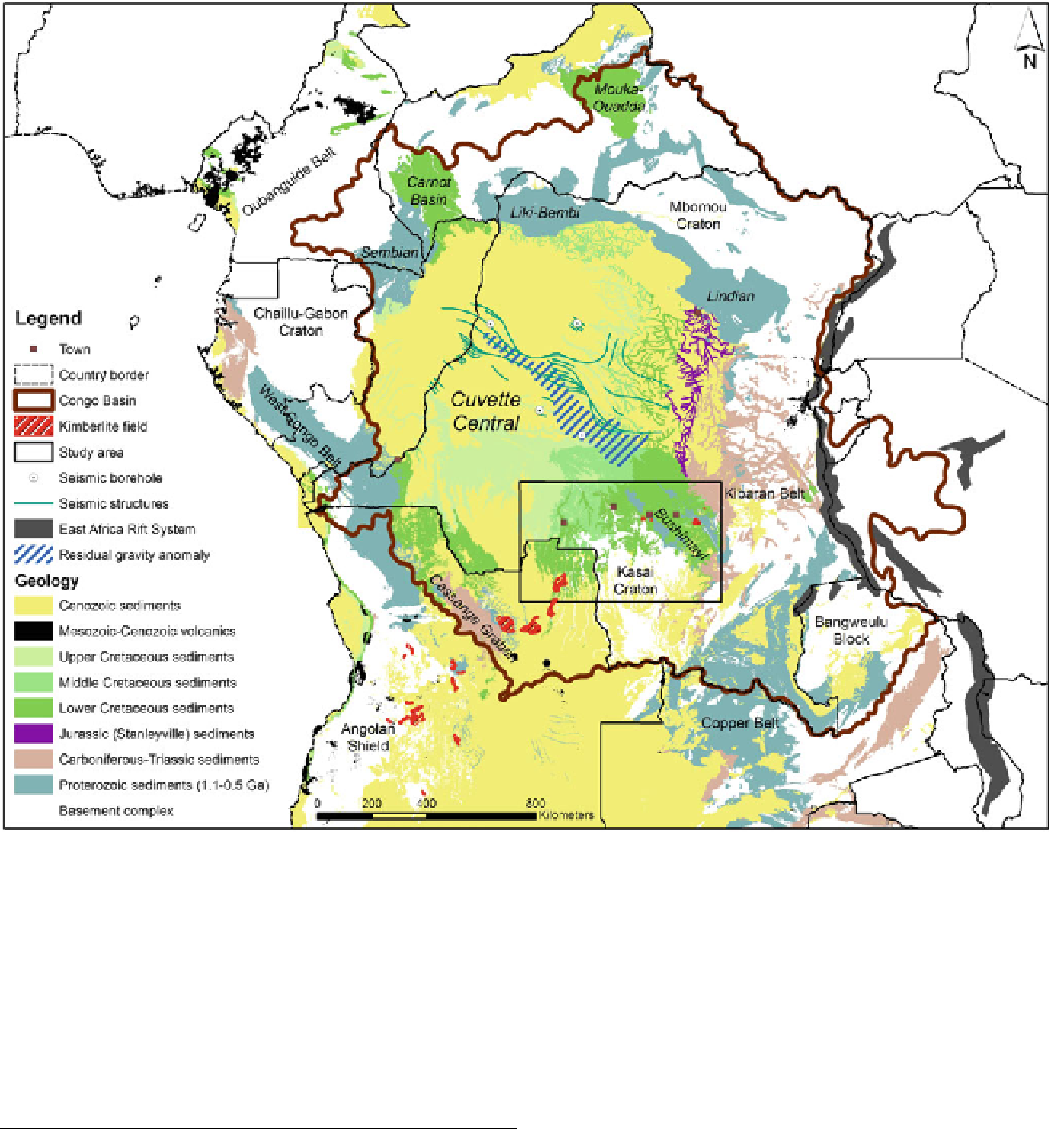Geology Reference
In-Depth Information
Fig. 9.2
Simplified geological map of the greater Congo Basin and
surrounding areas of Central Africa with
black box
around Kasai field
area. The margins of the basin are comprised of topographic highs,
including the uplifted Atlantic margin, East African Rift shoulder, and
basement highs of the Central African Shield
southern margin of the Congo Basin to reconstruct the age,
depositional environments, and stratigraphy. This investi-
gation highlights some hereto unrecognized structural and
stratigraphic complexities, elucidating new aspects of the
sedimentary and tectonic evolution of this part of the basin.
amalgamated Central African Landmass at the time of
Gondwana assembly (~550 Ma; De Waele et al.
2008
).
The nuclei of the Central African Shield are thought to
have stabilized during the Palaeoproterozoic (following the
Eburnean event). The eastern shield margin underwent con-
vergent Mesoproterozoic tectonism during the formation of
the Kibaran and Irumide Belts (Pedreira and DeWaele
2008
;
De Waele et al.
2008
), and subsequent Neoproterozoic
rifting led to the deposition of an epeiric platform sequence
along the southern margin (Johnson et al.
2005
). The
continent-wide Late Neoproterozoic-Early Paleozoic Pan-
African Orogeny significantly affected the shield, leading
to the formation of the West Congo, Lufilian, Damaran and
Kaoko, Oubanguide, and Zambezi belts along the margins of
the shield (Pedreira and DeWaele
2008
). Final assembly of
the Gondwanan supercontinent during the Early Paleozoic
(Late Pan-African Event) resulted in continued deformation
9.2
Background and Geologic Setting of the
Congo Basin
9.2.1 Tectonic Setting
The Congo Basin occupies the core of the Central African
Shield (Fig.
9.2
), which Dirks et al. (
2003
) define as an
assembly of Archean fragments, including the Kasai,
Mbomou, and the Chaillu-Gabon cratons, which were
once joined with the S˜o Francisco Craton, to form the


Search WWH ::

Custom Search